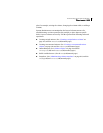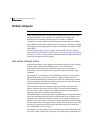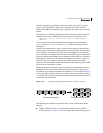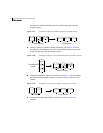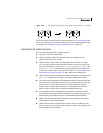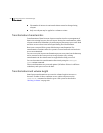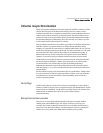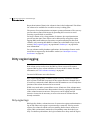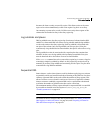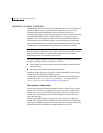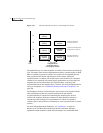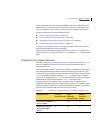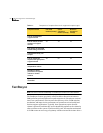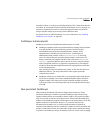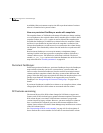
61Understanding Veritas Volume Manager
Dirty region logging
becomes the least recently accessed for writes. This allows writes to the same
region to be written immediately to disk if the region’s log bit is set to dirty.
On restarting a system after a crash, VxVM recovers only those regions of the
volume that are marked as dirty in the dirty region log.
Log subdisks and plexes
DRL log subdisks store the dirty region log of a mirrored volume that has DRL
enabled. A volume with DRL has at least one log subdisk; multiple log subdisks
can be used to mirror the dirty region log. Each log subdisk is associated with
one plex of the volume. Only one log subdisk can exist per plex. If the plex
contains only a log subdisk and no data subdisks, that plex is referred to as a log
plex.
The log subdisk can also be associated with a regular plex that contains data
subdisks. In that case, the log subdisk risks becoming unavailable if the plex
must be detached due to the failure of one of its data subdisks.
If the
vxassist command is used to create a dirty region log, it creates a log plex
containing a single log subdisk by default. A dirty region log can also be set up
manually by creating a log subdisk and associating it with a plex. The plex then
contains both a log and data subdisks.
Sequential DRL
Some volumes, such as those that are used for database replay logs, are written
sequentially and do not benefit from delayed cleaning of the DRL bits. For these
volumes, sequential DRL can be used to limit the number of dirty regions. This
allows for faster recovery should a crash occur. However, if applied to volumes
that are written to randomly, sequential DRL can be a performance bottleneck
as it limits the number of parallel writes that can be carried out.
The maximum number of dirty regions allowed for sequential DRL is controlled
by a tunable as detailed in the description of voldrl_max_seq_dirty in
“Tunable parameters” on page 475.
Note: DRL adds a small I/O overhead for most write access patterns.
For details of how to configure DRL and sequential DRL, see “Adding traditional
DRL logging to a mirrored volume” on page 281, and “Preparing a volume for
DRL and instant snapshots” on page 275.



